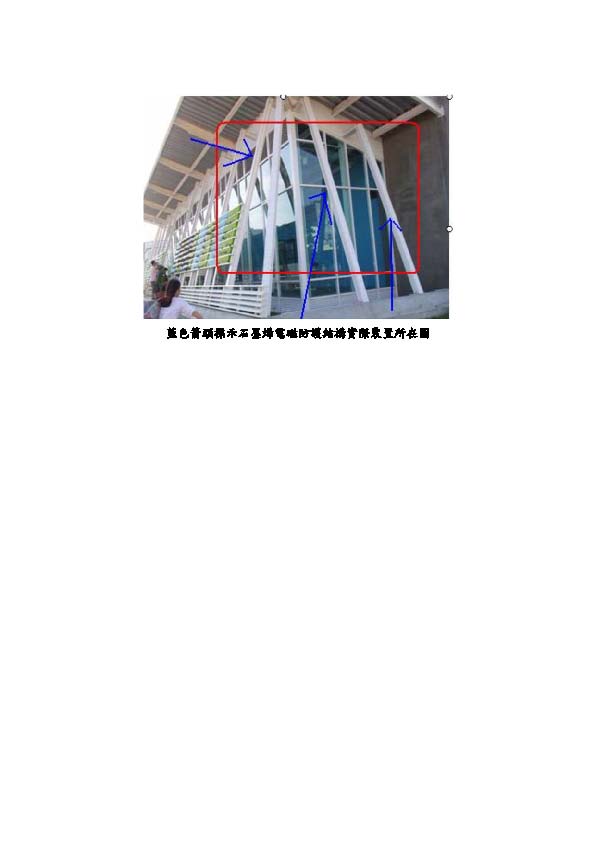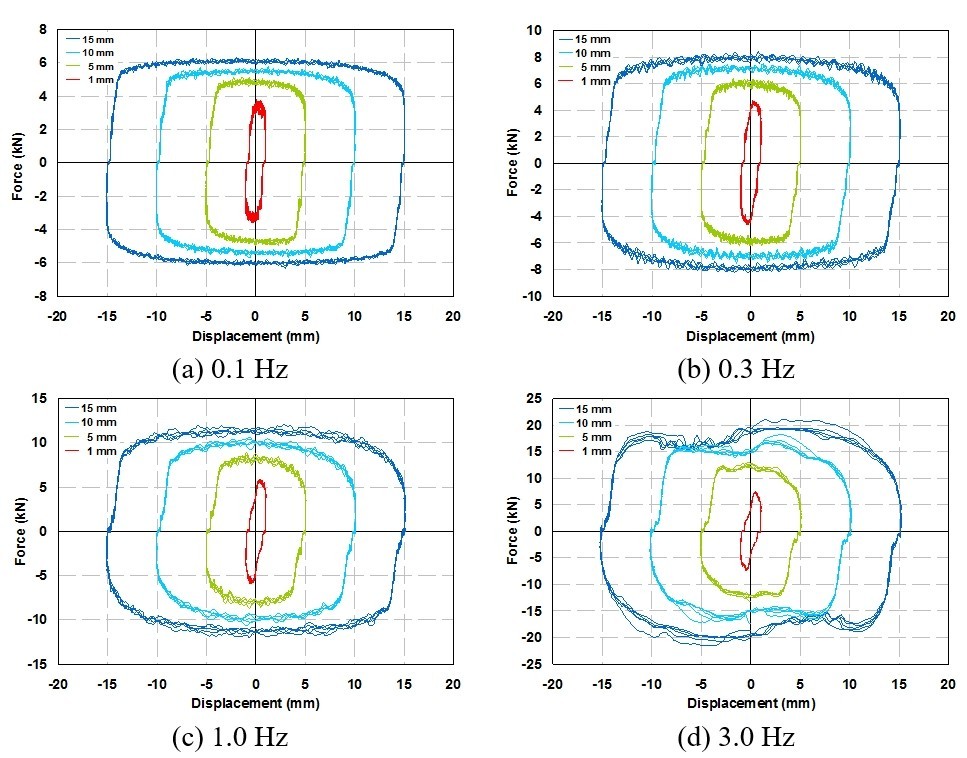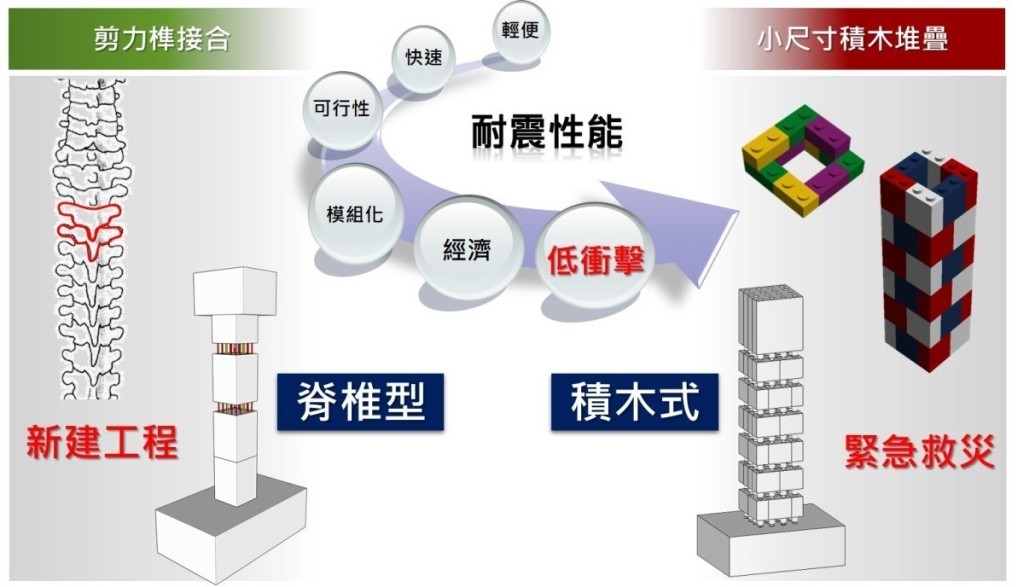| Technical Name | An innovative precast bridge pier system with bionic design | ||
|---|---|---|---|
| Project Operator | National Applied Research Laboratories | ||
| Summary | Imitating the structure of human vertebral column, the connections between the precast segments are hybrid connections containing shear keys, unbounded prestressing tendons, and bonded bar reinforcements. The shear key provides shear resistance between neighboring segments, and prestress force in the unbounded tendons can provide re-centering force as the joints between the segments are open. By extracting the concept of building a structure by stacking blocks, the size of each prefabricated modular segments can be kept small and the construction needs not to rely on any large-scale transport and hoisting equipment. |
||
| Scientific Breakthrough | In order to reduce the impact of bridge construction on the environment, an innovative design and construction methods for bridge pier system was developed based on the concept of human spine and block stacking. Imitating the structure of human vertebral column, a type of hybrid connection between the precast segments was proposed. The proposed connection between segments contains unbounded prestressing tendons, shear keys and bonded bar reinforcement that is spliced by bar couplers. The shear key provides shear resistance between neighboring segments, therefore high prestress force in the tendon is not necessary. Only small amount of prestress force is required for the unbounded prestressing tendons to provide re-centering force as the connection between the segments is open. In addition, the bonded bar reinforcement continuous between segments can provide the strength and energy dissipation capability. Inspired by the stacking of toy blocks, a column system which can be stacked not only vertically but also horizontally by several inter-connectable modular reinforced concrete segments was also proposed. Based on this proposed construction methodology, the segments can be fabricated into a single type in a precast factory, and then be assembled into a column of a required cross-section according to demands. As a result, the efficiency of segment fabrication can be enhanced and the manufacturing cost of steel molds can be reduced. Moreover, small segments can be conveniently stored and transported, meaning that no additional precast field is needed at a construction site, and construction need not rely on large-scale transport and hoisting equipment. Specifically, in this system, each segmental layer can include a number of the aforementioned precast segments and have the required cross-section through a proper arrangement of precast segments in the horizontal plane. Furthermore, the segmental layers can be stacked in a vertical direction by mortise-and-tenon joints to build a column of the desired height. Therefore, these segments can also be transported to a site and quickly reassembled into the required structural form in an emergency. |
||
| Industrial Applicability | 一般橋墩之快速施工,也可應用於緊急救災時橋墩之快速組立。 |
||
other people also saw







